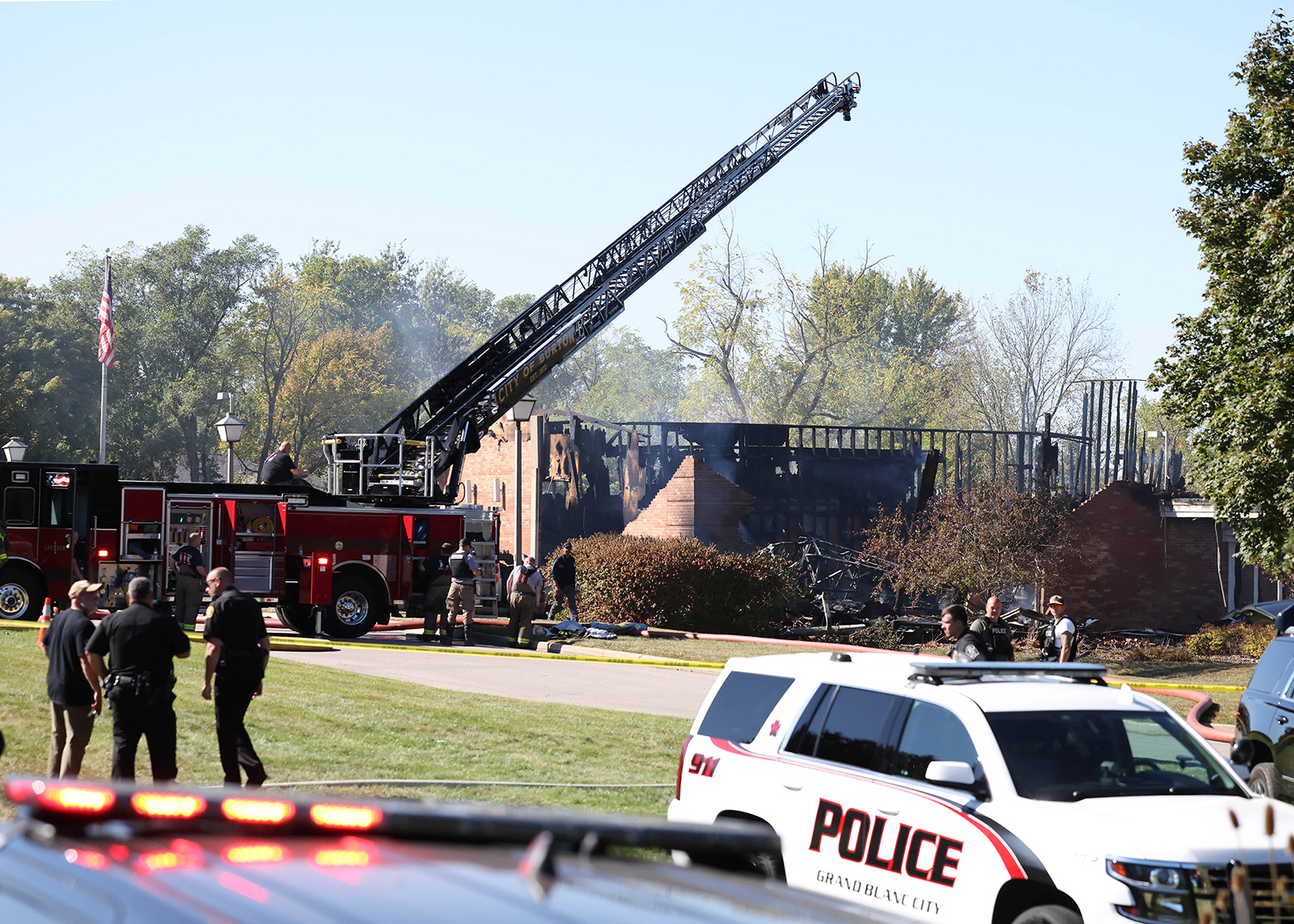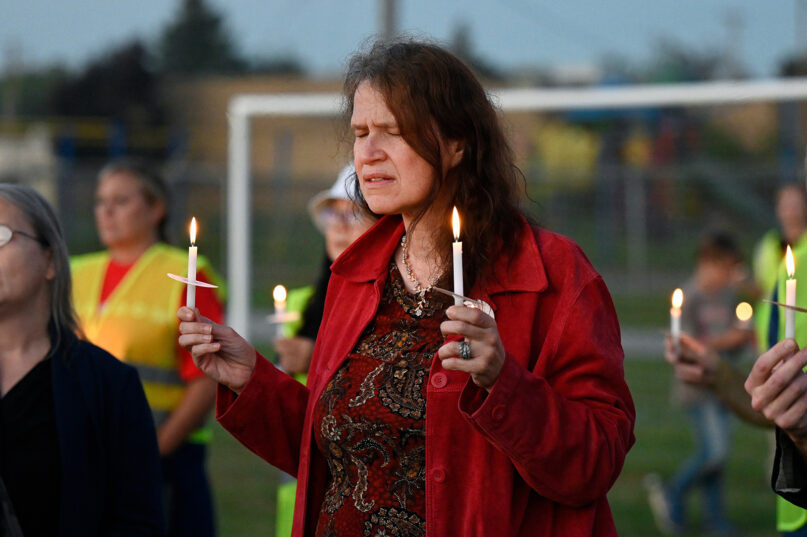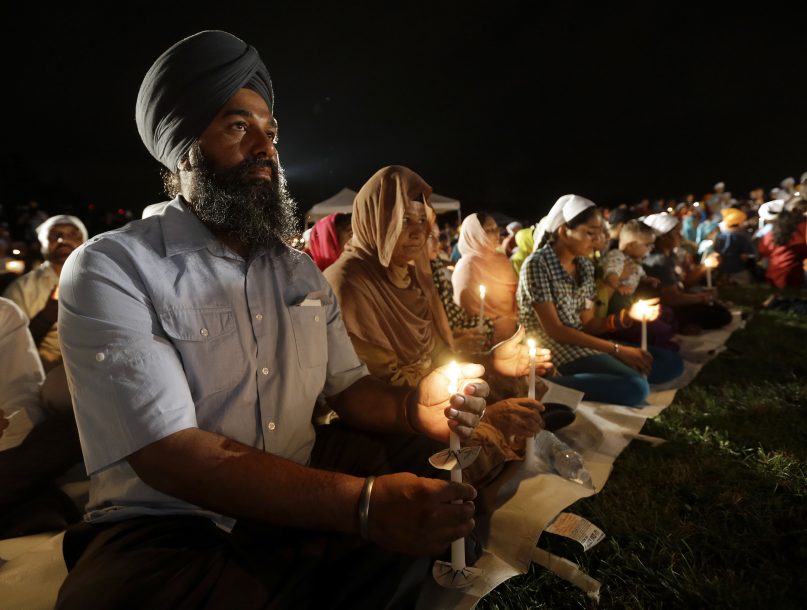
(RNS) — On Sunday (Sept. 28), a congregation outside Flint, Michigan, gathered in church to pray. That same morning, one of their neighbors, Thomas Jacob Sanford, got into his truck, ready to kill and destroy.
Sanford drove his truck into The Church of Jesus Christ of Latter-Day Saints in Grand Blanc Township. He opened fire on the praying congregation. Then he set the building on fire.
Four people are already confirmed dead. Eight are wounded. Authorities may discover more victims as they sift through the rubble. I hope they don’t.
In the immediate aftermath, authorities searched for the killer’s motives. They were able to identify that he had a grudge against members of the LDS church and had expressed animus for the faith over years, including just the week before, when he said “Mormons are the Antichrist.”
Investigating and understanding his hatred is important. It helps us understand what drove him to kill innocent people as they pray.
But whatever the thought behind what feels like an illogical and devastating attack, it’s clear that we have a bigger problem on our hands. Once we are able to identify why Sanford felt convicted enough to massacre innocent members of the LDS community, will we devote the appropriate resources to go beyond this man’s motives to address the causes of our recent flare-up of political violence at their source?

Attendees hold candles during a vigil for a nearby church shooting, held at Holy Redeemer Church in Burton, Mich., Sept. 28, 2025. (AP Photo/Jose Juarez)
There are many root issues we can identify; it feels as if we rehearse the list with every mass shooting: Indiscriminate and unregulated access to guns. Toxic polarization that has people pointing at their neighbors as their enemies. Extreme positions on righteousness, whether politically, culturally or religiously. The mobilization of fear, to divide and conquer, to demonize and dehumanize, to manipulate and uphold.
Mass shooting. Identify the motives. Announce to the public. Lather. Rinse. Repeat.
My frustration isn’t about obliviousness or naivete. My frustration is that we know precisely what the problems are, yet we’re not activating to address them.
Last weekend, a day before the attack in Michigan, Colorado students chanted “Fuck the Mormons” during their game against Brigham Young University. As Utah Sen. Mike Lee pointed out, these anti-Mormon chants are all too common at away games. They also reflect an ugly reality. Hating Mormons remains socially permissible in modern America, just as it was nearly 200 years ago when they were forcibly displaced and almost exterminated.
We talk a lot in this country about free speech. We don’t talk nearly as much about the link between hate speech and hate violence. Research has shown a linkage between the two, and it’s intuitive as well. Hateful rhetoric leads to dehumanization and feelings of supremacy, which in turn embolden violent actions against the target.
When our culture says it’s OK to denigrate LDS members as “the Antichrist” or to shout anti-Mormon slogans at football games, we are receiving and perpetuating messages that normalize hate. So, why are we surprised when someone who hates Mormons massacres them while they pray? And what are we doing to actually curb anti-Mormon sentiment and to ensure that these attacks will stop?

People listen to speakers during a candlelight vigil in the parking lot the Sikh Temple of Wisconsin on Aug. 5, 2013, in Oak Creek, Wis., marking the one-year anniversary of the shooting rampage when a white supremacist killed six people. (AP Photo/Morry Gash)
In 2012, when Sikhs were massacred while they prayed at their gurdwara in Oak Creek, Wisconsin, it was the deadliest mass killing at a place of worship in the United States since the 1963 bombing of the 16th Street Baptist Church in Birmingham, Alabama. Those two events were 49 years apart.
In the past 13 years, there have been multiple mass shootings at other places of worship. Nine killed at Mother Emanuel African Methodist Episcopal Church in Charleston, South Carolina (2015), 25 killed at the First Baptist Church in Sutherland Springs, Texas, including a pregnant woman (2017), 11 killed at the Tree of Life synagogue in Pittsburgh (2018), two killed at the Annunciation Catholic Church in Minneapolis (2025).
Add the LDS church to the list that no one wants to be a part of. The truth is that none of us is safe until all of us are safe. Hate hurts us all.
As these lists grow and as mass shootings become more commonplace, it’s easy to become desensitized. There were at least 11 mass shootings in the U.S. in September alone. They rarely stayed in the headlines for more than a day or so, and it’s hard to keep them at the front of our consciousness.
But as I’ve heard from survivors in these cases and others, these instances aren’t just blips in history, or memories that live in the past. They stay with us every day. We live with it daily.
The violence is part of our present until we decide not to let it be so. But to do that, we actually have to care about more than identifying motives in individual cases and focus on rooting out the disease that ails us.
Until and unless we do that, we’re all just sitting ducks — even while we pray not to be.
